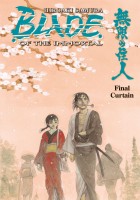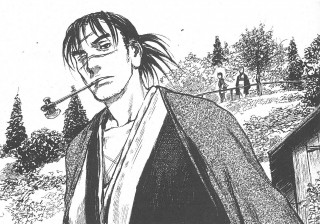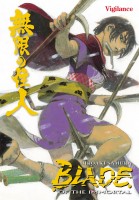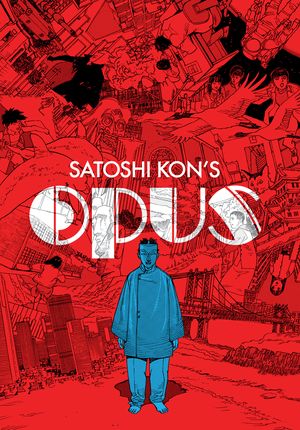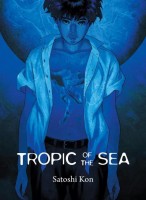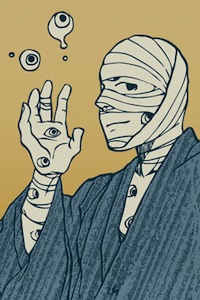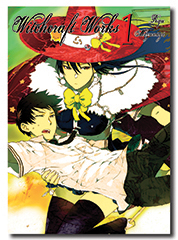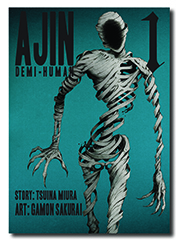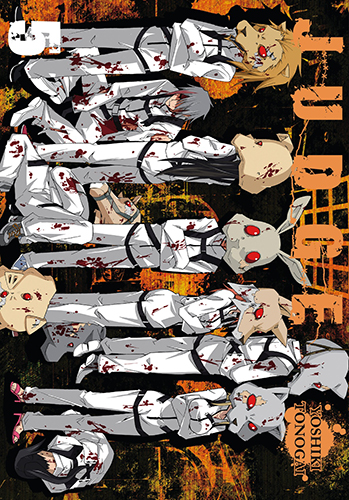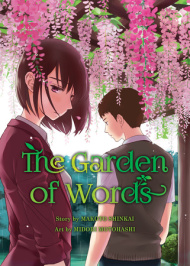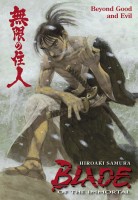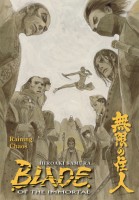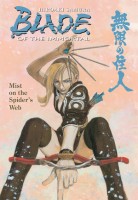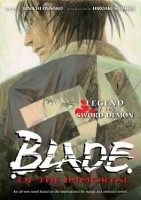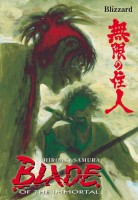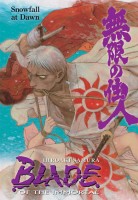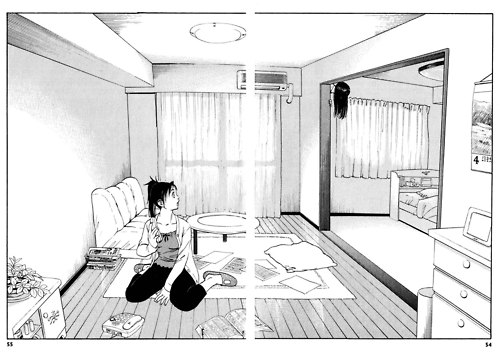 Are you headed to San Diego this week? If so, this column is for you! We’ve compiled a handy list of the major manga events, from VIZ’s Ultraman spectacular to Tokyopop’s Don’t-Call-It-a-Comeback panel. Our own Brigid Alverson will be joining an all-star line-up of bloggers for the Best and Worst Manga of 2015 panel, which will be held on Saturday, July 11th at 7:00 pm. We’ll also be updating the blog throughout the week with the latest licensing announcements.
Are you headed to San Diego this week? If so, this column is for you! We’ve compiled a handy list of the major manga events, from VIZ’s Ultraman spectacular to Tokyopop’s Don’t-Call-It-a-Comeback panel. Our own Brigid Alverson will be joining an all-star line-up of bloggers for the Best and Worst Manga of 2015 panel, which will be held on Saturday, July 11th at 7:00 pm. We’ll also be updating the blog throughout the week with the latest licensing announcements.
A final note about the programs listed below: our list focuses on manga, but there are also a wealth of anime programs including cosplay panels, voice acting workshops, and screenings of Spirited Away. A comprehensive schedule of anime events is now live on the SDCC website, and available through the Comic-Con app (iOS and Android).
THURSDAY, JULY 9th
Shonen Jump: Past, Present, and Future
10:00 – 11:00 am, Room 5AB
From the program: “Hang out with the English language editors of the world’s most popular manga, plus special surprise guests! Come hear some exciting news about the latest new series, all-time fan favorites, and everything in between. Plus a chance to win amazing prizes by showing off your SJ trivia skills.”
What Do Women Want? Female Gaze in Manga
3:00 – 4:00 pm, Room 29AB
From the program: “From shojo manga to boys love manga to reverse harem ‘otome’ video games and anime filled with delectable guys, these media have been catering to the tastes of female fans in Japan. These stories are reaching readers and inspiring comics creators worldwide more than ever. See what manga publishing pros Leyla Aker (senior vice president, publishing, VIZ Media), JuYoun Lee (editor-in-chief, Yen Press), Lillian Diaz-Pryzbyl (head of comics, Sparkler Monthly), and manga creator Jamie Lynn Lano (The Princess of Tennis, Denkiki) have to say about ‘female gaze’ in manga, why it sells, and why it matters. They’ll also share their picks for your next must-read manga that’ll make you swoon. Moderated by Deb Aoki (Publishers Weekly, Manga Comics Manga).”
VIZ Media
4:00 – 5:00 pm, Room 7AB
From the program: “Come party with VIZ Media! And by party, they mean sit in a chair and listen to thrilling tales of upcoming releases and other Earth-shattering announcements from North America’s largest distributor of manga and anime… Hosted by Urian Brown, Charlene Ingram and VIZ Media staff, with special guests.”
Making a Living in Manga: Japan Creators, Editors Talk
5:00 – 6:00 pm, Room 29AB
From the program: “What’s it like to work as a comics creator in Japan? What does it take to sell your self- published manga at Tokyo’s Comic Market (Comiket), the world’s largest comics show? How do Japanese manga editors work with creators to craft addictive stories that keep readers coming back for more? Hear what it’s really like to work in the motherland of manga from Japan- and U.S.-based pros who have done all of this and more. Akihide Yanagi (writer, agent), Kamome Shirahama (manga artist, Eniale & Dewiel), Philip S. Y. Tan (Heaven, Uncanny X-Men), Makoto Nishi (manga editor), and Philip Knall (translator, salaryman) offer a rare look behind the scenes of Japan’s manga biz, followed a Q&A session moderated by Deb Aoki (Publishers Weekly, Manga Comics Manga).”
Dark Horse Manga
6:00 – 7:00 pm, Room 9
From the program: “Dark Horse’s history with Japanese comics can be traced back to the company’s earliest years… Dark Horse continues to publish some of the industry’s bestselling titles… Be on hand for a look at the past, present, and future of manga at Dark Horse.”
Manga: Lost In Translation
7:00 – 8:00 pm, Room 9
From the program: “It seems that manga is charging back from its late ’00s slump, and anime simulcasts have become the norm. So what is it like to work in the industry? Here’s your chance to ask some of the top professionals in the manga and anime industry about their jobs and the titles they’ve worked on. Join William Flanagan (Fairy Tail), Jonathan “Jake” Tarbox (Fist of the North Star), Mari Morimoto (Naruto), Stephen Paul (One Piece), Ed Chavez (director, Vertical Comics), and Lillian Diaz-Przybyl (head of comics, Chromatic Press Inc.) for this panel.”
FRIDAY, JULY 10th
Get Your Comic Published in Japan: Silent Manga Audition
1:30 – 2:30 pm, Room 5AB
From the program: “Jonathan Tarbox (CEO, Arashi Productions) explains how manga artists from any nation can submit their work to a contest run by a major Japanese publisher. Winners will have their submission published in Japan and be considered for the opportunity to work in the manga industry…”
VIZ Media: Ultraman
3:00 – 4:00 pm, Room 23ABC
From the program: “For their first international appearance, Eiichi Shimizu and Tomohiro Shimoguchi, creators of the new VIZ Media manga series Ultraman, inspired by the original Japanese TV show, are joined onstage by special guests from Legendary Comics to discuss Japan’s quintessential superhero and the influence of kaiju in today’s pop culture…”
Manga Publishing Industry Roundtable
5:00 – 6:00 pm, Room 4
From the program: “Manga publishing in North America has definitely seen its shares of highs and low, from the manga boom in the early 2000s to the crash ten years later, caused by a perfect storm of the U.S. recession, Borders bookstores closures, and the growth of online piracy. So how are things now? Get a taste of what’s hot, what’s not, and what’s next for manga in North America and Japan, from top publishing pros including Leyla Aker (senior VP, publishing, VIZ Media), Kurt Hassler (VP, publishing director, Yen Press), Michael Gombos (director of licensing Asia, Dark Horse Comics), Ben Applegate (associate director, publishing services, Penguin Random House), and Erik Ko (chief of operations, Udon Entertainment). Moderated by Deb Aoki (Publishers Weekly, Manga Comics Manga).”
Showcasing the Best in Korean Comics
7:30 – 8:30 pm, Room 26AB
From the program: “A team of Korea’s prolific artists and animation studios, represented by Jongmin Shin (CEO of EGA Studios), showcases the latest and greatest trends in Korean comics and animation. They will also showcase their recent and upcoming productions on some of today’s hottest comics. Join Jongmin and crew for this Q&A session moderated by Austin Osueke (publisher of eigoMANGA).”
SATURDAY, JULY 11th
Kodansha Comics
11:30 am – 12:30 pm, Room 8
From the program: “The publisher of the manga megahit Attack on Titan… reveals exciting upcoming titles. General manager Kana Koide and senior editor Ben Applegate will answer your questions about Kodansha’s books and the manga industry.”
Spotlight on Yu-Gi-Oh! and Creator Kazuki Takahasi
2:00 – 3:00 pm, Room 7AB
From the program: “Get a rare, behind-the-scenes look at the Yu-Gi-Oh! phenomenon and a sneak peek at the third Yu-Gi-Oh! feature film through the eyes of world-renowned manga artist and Yu-Gi-Oh! creator Kazuki Takahashi, and other distinguished panelists…”
Tokyopop: The Robofish Rises
6:00 – 7:00 pm, Room 28DE
From the program: “Big News, TOKYOPOP is coming back! Meet Stu Levy (founder, CEO), Clay Bohle, and the TOKYOPOP team to get the scoop firsthand. Giveaways for all attendees. If you’re an artist, bring your portfolio for review, and if you’re a fan, bring all your questions.” [Editor’s note: for more information about Tokyopop’s past and future, check out Brigid’s recent article at Comic Book Resources. If you’re planning to bring your portfolio, be sure to read Alex De Campi’s blog post about her complicated–and sometimes exploitative–relationship with Tokyopop.]
Best and Worst Manga of 2015
7:00 – 8:00 pm, Room 23ABC
From the program: “A panel of opinionated bloggers, retailers, librarians, manga mavens, and comics curmudgeons spotlight the best new manga that hit the shelves in the past year. See them rave about their favorite continuing series. Watch them rant about the excruciatingly mediocre manga that they were forced to read. Find out what Brigid Alverson (Robot 6, Good Comics for Kids), David Brothers (4thletter!), Christopher Butcher (The Beguiling, Toronto Comic Arts Festival), Eva Volin (Alameda Free Library, No Flying No Tights), and Deb Aoki (Manga Comics Manga, Publishers Weekly) loved and loathed to read in the past year. Hear about their picks for the most anticipated upcoming releases for fall 2015 and beyond, and discover their favorite underappreciated manga gems that are worth picking up.”
